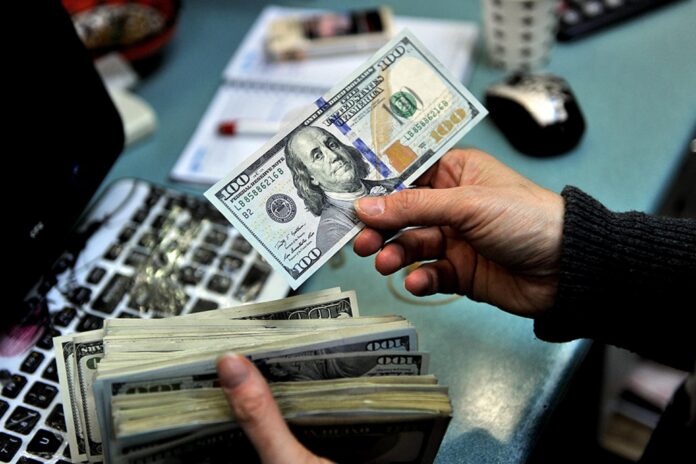On a day marked by the caretaker government’s finance team loudly announcing the country’s economic position was worse than they had anticipated, the rupee’s value continued to decline falling to nearly Rs 325 per dollar in the open market.
Exchange companies were buying the dollar at Rs 322 and quoting a sell rate of Rs 324.5. This is significantly higher than the ‘official’ rates shared by the Exchange Companies Association of Pakistan (ECAP) in its noon update.
According to the ECAP, the US dollar was being bought at Rs 316 and sold at Rs 319. This equates to a difference of Rs 5.5 between the ‘official’ and ‘unofficial’ open market selling rates.
The difference in the rates between the open and interbank market is even more pronounced. The dollar was being bought at Rs 304.65 and sold at Rs 305.2, respectively, in the interbank market. This amounts to a difference of Rs 13.8 or 4.52 percent between the interbank and ‘official’ open market rates. The difference between the interbank and ‘unofficial’ open market rates is a whopping Rs 19.3 or 6.32 percent.
Moreover, there is a spread of 55 paisa between the buying and selling rate in the interbank. The high spread means the market is currently volatile, because whenever that happens, banks increase the difference between their buying and selling rates to protect their positions. This way, if they have bought dollars at a certain price, which later falls, they will not have to sell at a loss.
The rupee has been in freefall in recent days after the government lifted import restrictions, resulting in increased demand for the dollar and pressure on the rupee. While the demand has gone up, dollars are in short supply and exchange companies have said that they do not have dollars to sell. If some companies do, they ask the person to inform them of the reason they require the dollars after which a decision is made about the sale.
Aside from the short supply and volatility, one important reason all these different rates matter is because of a Standby Agreement that Pakistan signed with the International Monetary Fund (IMF) earlier this year. Under the agreement, the price difference between the interbank and open markets cannot be higher than 1.25 percent for five business days. Right now, this difference stands at 4.52 percent. What is even more concerning, however, is the two different rates in the open market itself, and the premium of 6.32 percent between the interbank and ‘unofficial’ open market rates.
This means that either the open market rate has to be brought down — which the government cannot do through administrative measures as the IMF agreement binds it to adhere to a market-based exchange rate — or the interbank rate must catch up. If this doesn’t happen, it may become difficult for the government to complete the next review to release a tranche of nearly $700 million under the SBA.
























